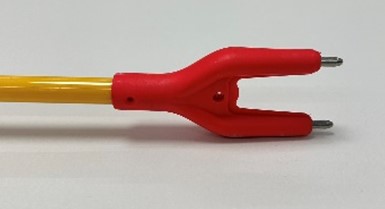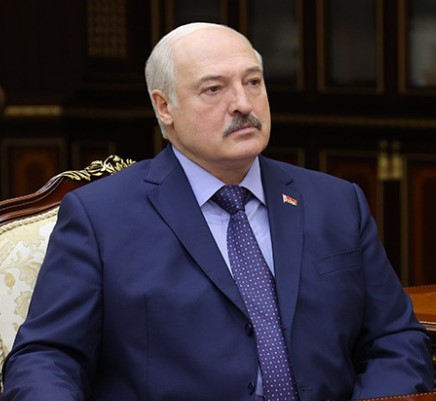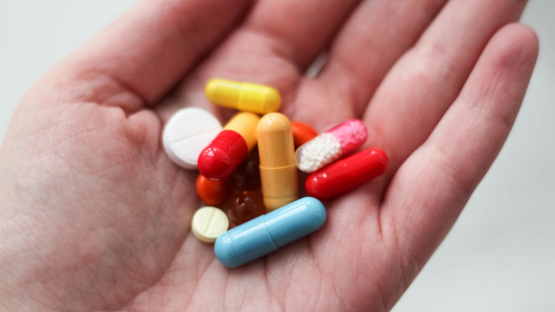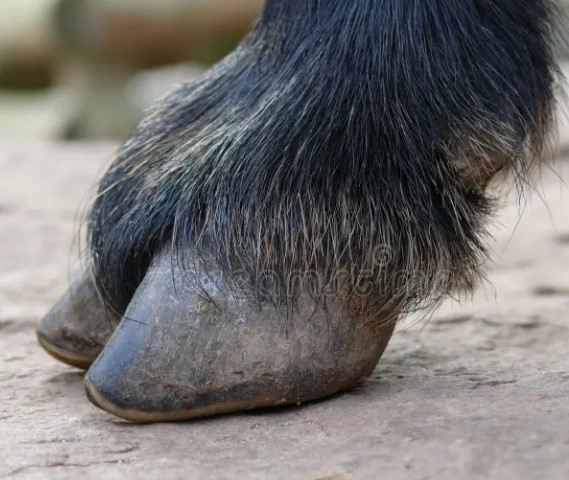State support did not help bring Kurgan animal husbandry out of the crisis
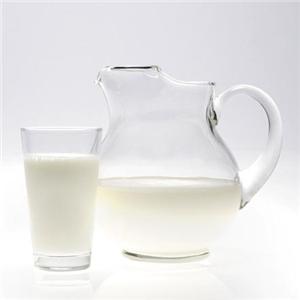
Unprecedented measures have been taken to support animal husbandry in the Kurgan region. Last year, 623 million rubles were allocated for the production of MILK and MEAT - a third more than a year earlier. This is more than half of the total budget financing of the agro-industrial complex. However, subsidies and subsidies have not yet helped to bring the livestock sector out of the crisis: according to preliminary data, in 2021 the industry worked with a minus, while crop production showed good profitability and grew by 26 percent.
During a discussion of the state of affairs in animal husbandry at a meeting of the Agrarian Committee of the Regional Duma, the HEAD of one of the large farms, Roin Tskhovrebov, actually predicted a collapse in dairy farming: by 2025, no more than 40-50 percent of the milking herd in the region will remain. In his opinion, the authorities pay too much attention to farmers, and agricultural enterprises are forced to survive.
* I have about a thousand cows. Huge amounts of money are spent on their maintenance. As we begin to sow in May, so until the end of October we work only for animal husbandry. And what is the result? The other day, the accountant reported: about 50 million losses per year, ”Tskhovrebov shared with RG. - Only 15 million rubles were spent on the removal of humus from farms. About ten years ago, they gave a subsidy for this, now it is gone. But the requirements are growing: it is necessary to build special manure storage facilities, otherwise there will be a fine.
The head of the agrarian committee, Alexander Bryukhanov, does not share the pessimistic attitude of his colleague. In his opinion, animal husbandry used to play a secondary role in the region. But in the last two years, milk and meat producers have not been circumvented by either subsidies or grants.
To confirm the words of the deputy, the DIRECTOR of the regional department of the agro-industrial complex Pavel Koshcheev cites the following figures: in 2021, more than 1.2 billion rubles were transferred to agricultural producers under the regional program for the development of the agro-industrial complex, including 850 million from the federal budget. 385.5 million were allocated to support 98 livestock farms. In particular, a subsidy was provided for the development of dairy cattle breeding based on a kilogram of produced and sold milk. Assistance was used by 47 recipients for 153 million rubles. For beef cattle breeding, a subsidy is intended to reimburse part of the costs of maintaining the breeding stock of specialized meat breeds - 6,000 rubles per animal: a total of 17.9 million rubles was paid to 44 recipients. There is a separate form of support for livestock breeding: 10 out of 12 such farms received 34.8 million rubles last year. In addition, 13.8 million rubles of subsidies were directed to the technical re-equipment of the industry - reimbursement of up to 40 percent of the cost of acquiring specialized equipment. There was state support for the purchase of farm animals both within the region and brought from other regions: they compensated up to 60 percent of the costs for the purchase of young cattle of dairy and meat breeds, as well as sheep and goats. Thanks to this assistance, 1,153 animals were imported from outside the region in 2021. They are actively acquired by peasant farms. There was state support for the purchase of farm animals both within the region and brought from other regions: they compensated up to 60 percent of the costs for the purchase of young cattle of dairy and meat breeds, as well as sheep and goats. Thanks to this assistance, 1,153 animals were imported from outside the region in 2021. They are actively acquired by peasant farms. There was state support for the purchase of farm animals both within the region and brought from other regions: they compensated up to 60 percent of the costs for the purchase of young cattle of dairy and meat breeds, as well as sheep and goats. Thanks to this assistance, 1,153 animals were imported from outside the region in 2021. They are actively acquired by peasant farms.
And last year, 38 agricultural producers with 50 or more cows received support for the produced and sold grain for the first time. The money was allocated by the federal center at the expense of funds from grain duties. The region received 138 million rubles for these purposes, all the money went to livestock breeders. As Pavel Koshcheev emphasized, such a decision was not easy: grain producers demanded that the money be distributed among all farmers.
Farmers believe that by 2025, 40-50 percent of the dairy herd will remain in the region: the authorities pay too much attention to farmers, and agricultural enterprises are forced to survive.
In connection with the drought last year, the Ministry of Agriculture of the Russian Federation allocated an additional 43 million rubles for the purchase of feed for 28 farms specializing in dairy farming. In addition, for the first time in the last three years, 31.8 million rubles were transferred from the regional budget to 14 farms with a herd of at least 200 dairy cows to reimburse part of the costs of maintaining breeding stock (6,000 rubles per head).
This year, all these measures are maintained. Of the total program funding (more than 1.1 billion), it is planned to allocate 641 million rubles to animal husbandry. Moreover, state support for investment projects in this industry is being strengthened: it is planned to allocate an additional 200 million for the purchase of machinery and equipment. A farm building a farm for 350 heads can return up to 60 million rubles. Previously, there were no such measures of state support for animal husbandry. But why does the herd and milk production continue to decline?
According to Sverdlovskstat, at the end of 2021, the number of cattle in farms of all categories of the Kurgan region was 116.3 thousand heads. Compared to the previous year, it decreased by 3.5 percent. Milk produced 182.8 thousand tons (96.2 percent). Household households are still the main producers - they account for over 60 percent. The share of agricultural organizations in the production of livestock and poultry for slaughter (in live weight) is 32 percent, milk - 26 percent.
According to the Department of Agroindustrial Complex, there are 25.7 thousand head of beef cattle in the region. Growth over the past three years was 42 percent. Dairy farming has 30,000 heads, of which about 12,000 are dairy cows. Peasant farms are actively increasing their herds: they already have 10,000 cows, and about 3,000 milk cows. There are also benefits for the private sector: the state reimburses the buyer of a cow for 70 percent of its value.
The dynamics of large farms is negative, and their bankruptcy is not uncommon. According to Pavel Koshcheev, this is primarily due to their debt load. However, agricultural managers complain that social institutions - schools and hospitals - do not always pay for products on time, debts accumulate, which also negatively affects economic efficiency. The head of the department immediately reacted to this: if there are facts of non-payment, it is necessary to deal with debtors and find out the reasons.
A new headache for big business is the construction of manure storage facilities. Their construction can take from 30 to 200 million rubles. Even those who planned to open new production facilities and invest in the construction of farms began to think. The head of the agricultural department said that this issue had already been discussed in the Ministry of Agriculture. One of the proposals is to allow livestock breeders to dispose of manure on their own fields, as it was before, in compliance with the norms - using fermentation and other technologies.
The department does not deny that there are certainly problems in the industry, for example, with preferential lending, and not only in animal husbandry, but in the whole agricultural sector. If last year the agricultural producers of the Trans-Urals were granted preferential loans for 84 million rubles, then now the federal center has allocated only 8 million so far, this, of course, is not enough. The total need of farmers for subsidies is 168 million rubles. Applications have been submitted to the bank, farms are waiting for money to purchase feed, seeds, fertilizers, and implement investment projects, but the funds have not yet arrived. The regional government is taking steps to address this issue.
Read together with it:
- США ввели санкции против президента КолумбииПрезидент Колумбии, его жена и старший сын, а также глава колумбийского МВД попали под санкции США из-за трафика наркотиков из Колумбии в Штаты. Бессент обвинил Петро в отказе пресечь деятельность наркокартелей Густаво Петро Минфин США ввел санкции против президента Колумбии Густаво Петро, сообщается на сайте ведомства. «Президент Петро позволил наркокартелям процветать и отказался пресечь их деят...
- Чего ожидать от «одной из самых рискованных» поездок ТрампаДональд Трамп начал турне по Азии, в ходе которого встретится с лидерами ключевых стран, включая Си Цзиньпина. Почему эта поездка может оказаться сложнее, чем недавние визиты в Европу и на Ближний Восток — в статье РБК Дональд Трамп Какие встречи запланированы в ходе турне Президент США Дональд Трамп вылетел из Вашингтона поздним вечером в пятницу, 24 октября, и утром в субботу его борт приземлитс...
- Лукашенко высказался против простых решений по Витебской области и действий по пути наименьшего сопротивления24 октября, Витебск. Президент Беларуси Александр Лукашенко на совещании по Витебской области высказался против принятия простых решений и действий по пути наименьшего сопротивления, передает корреспондент БЕЛТА. Свое требование глава государства пояснил на примере созданных ранее в регионе агропромышленных объединений. Президент напомнил, что тогда предлагалось вообще лишить самостоятельности рук...
- Производство молока, инвестиции. Какие точки роста на пятилетку видит руководство Витебской области24 октября, Витебск. Инвестиции, модернизация в АПК, развитие молочного производства, туризм - на что будут делать ставку в социально-экономическом развитии Витебской области в предстоящей пятилетке, чтобы наверстать отставания от других регионов, на совещании с участием Президента Беларуси Александра Лукашенко рассказал председатель облисполкома Александр Субботин, передает корреспондент БЕЛТА. А...
- Новое видео на нашем канале: Тысячи верблюдов под одним взглядом: как устроена смотровая площадка в конецентре Бауржана ОспановаРазговор с Бауржаном Кенесбековичем Оспановым о верблюдоводстве в Казахстане. Зачем казаху верблюд, как устроен конецентр и смотровая площадка где тысячи верблюдов проходят бонитировку. И снова, друзья мои, мы беседуем с известным казахстанским бизнесменом и меценатом Бауржаном Кенесбековичем Оспановым - человеком, который не просто развивает сельскохозяйственный бизнес, но делает это системно, с ...



























